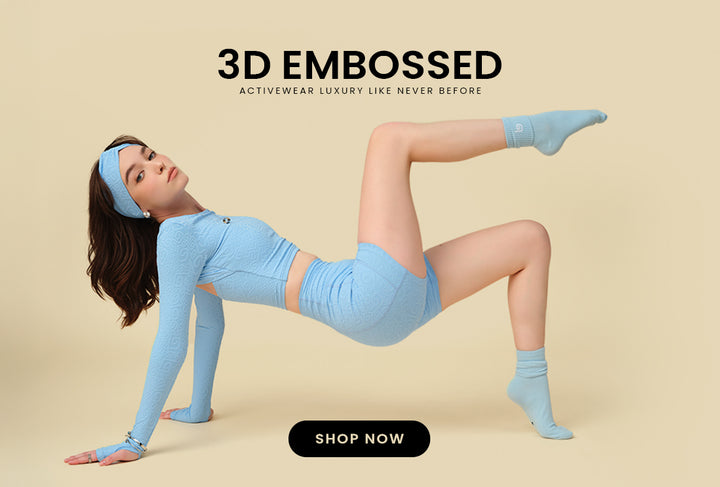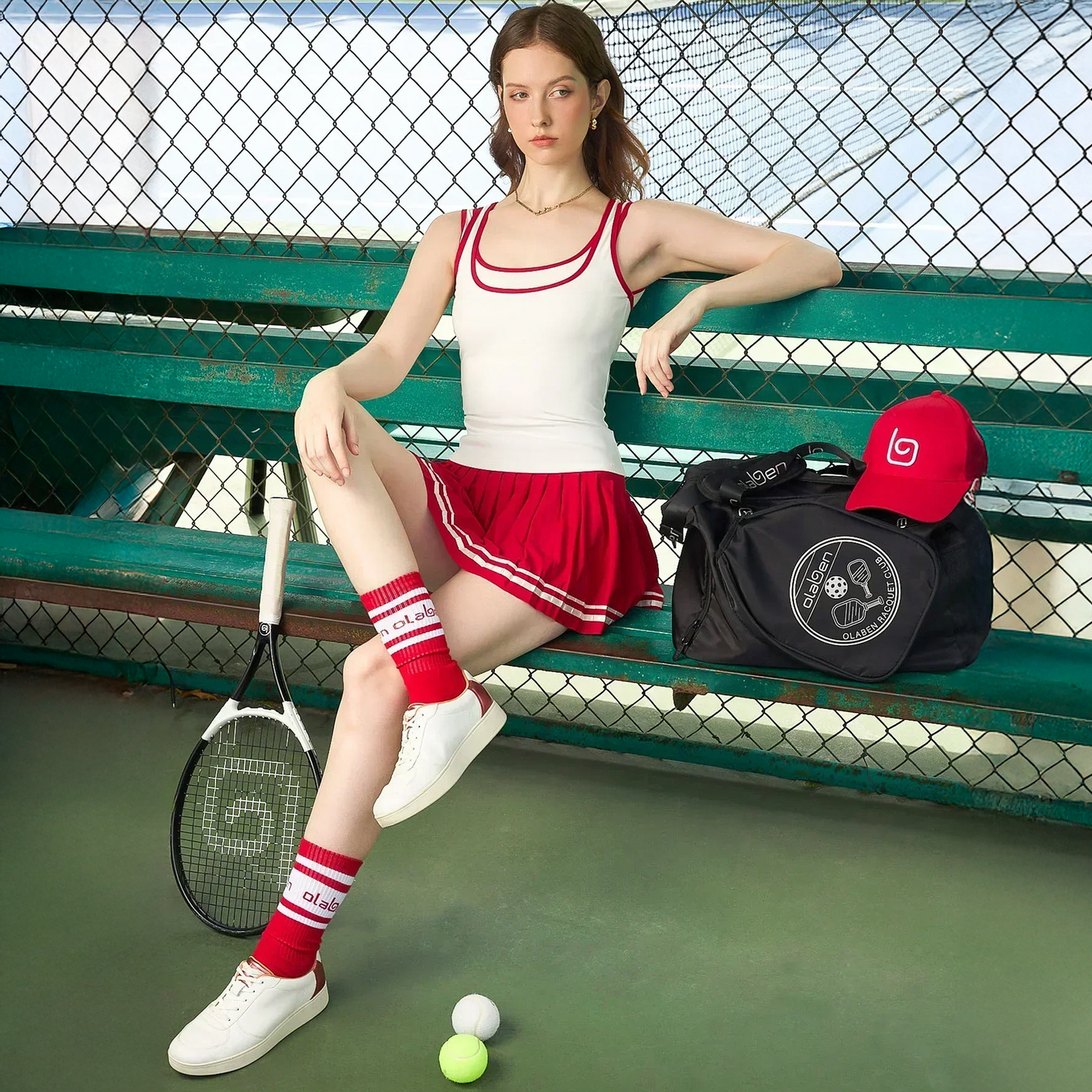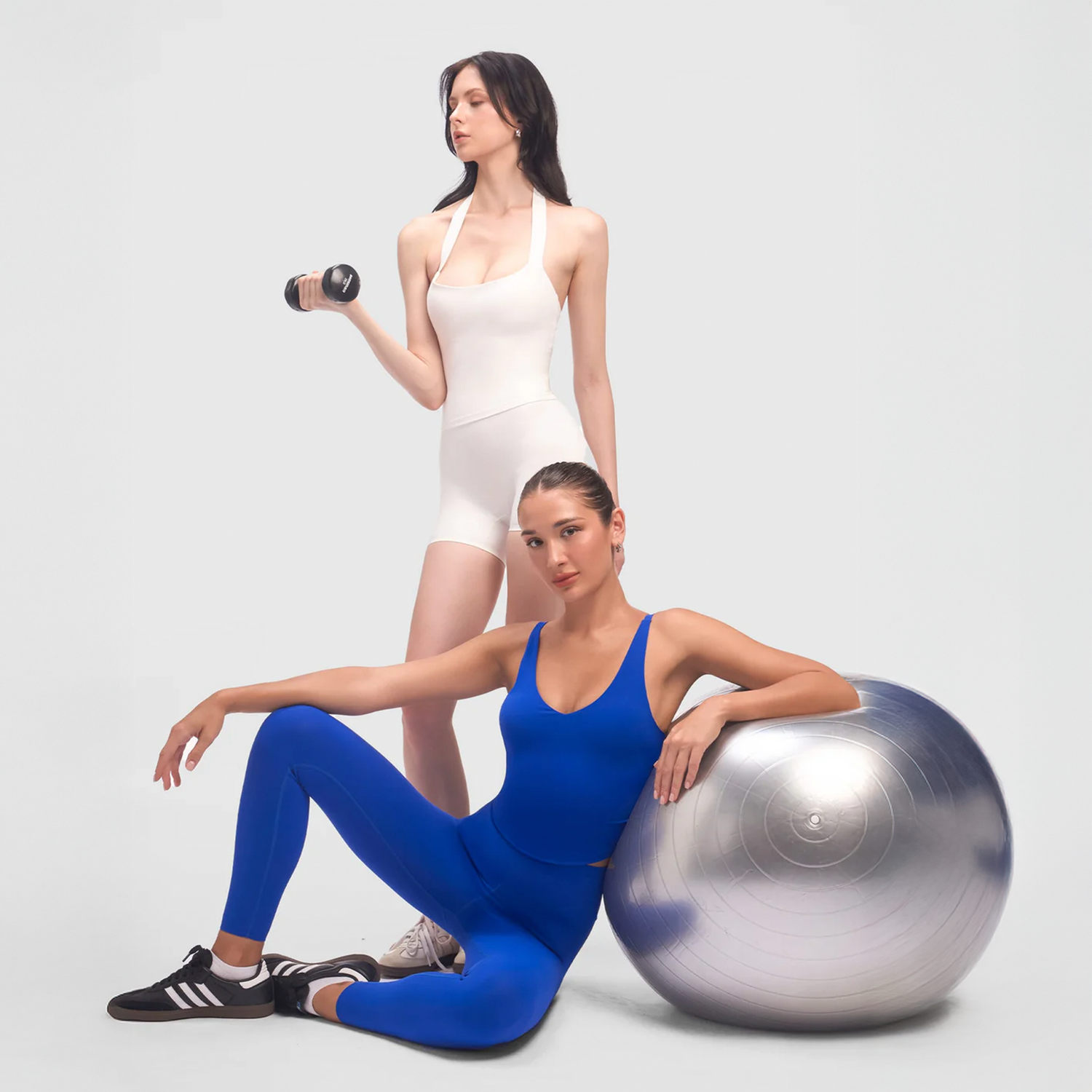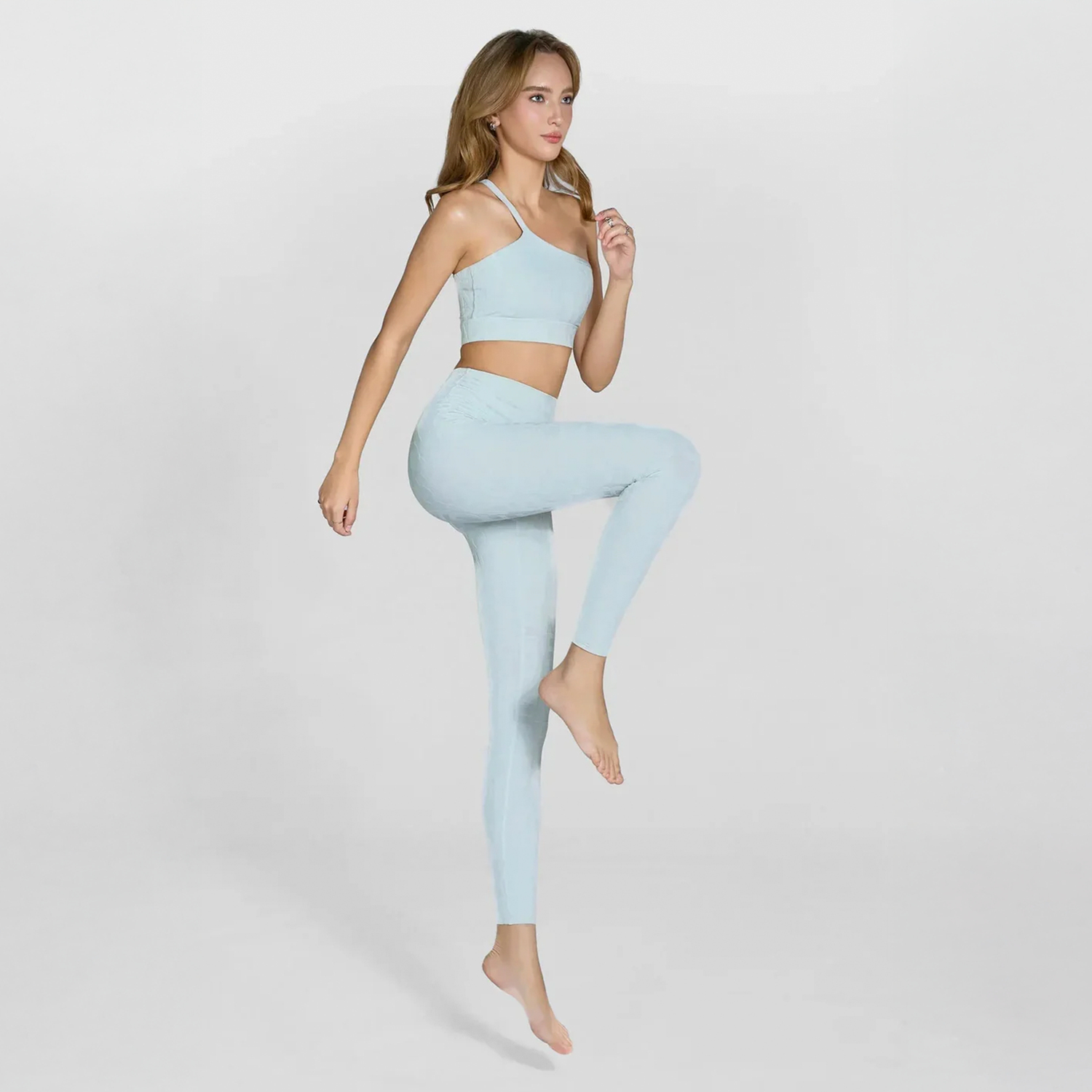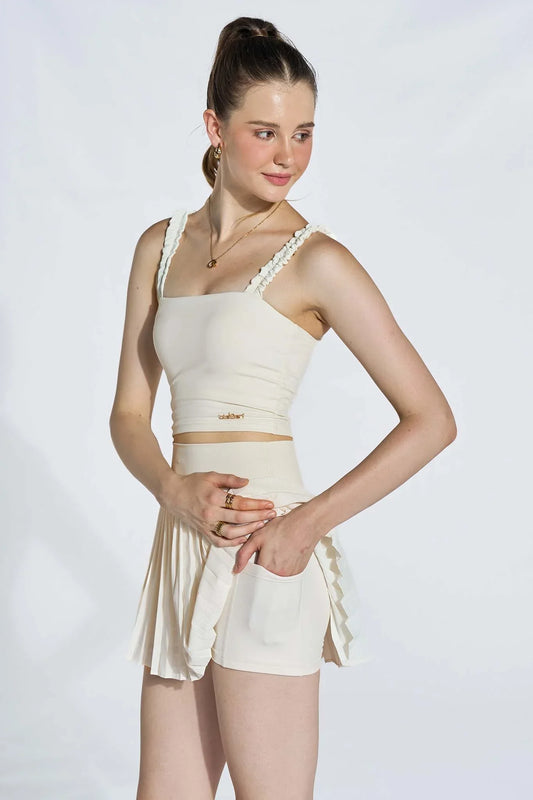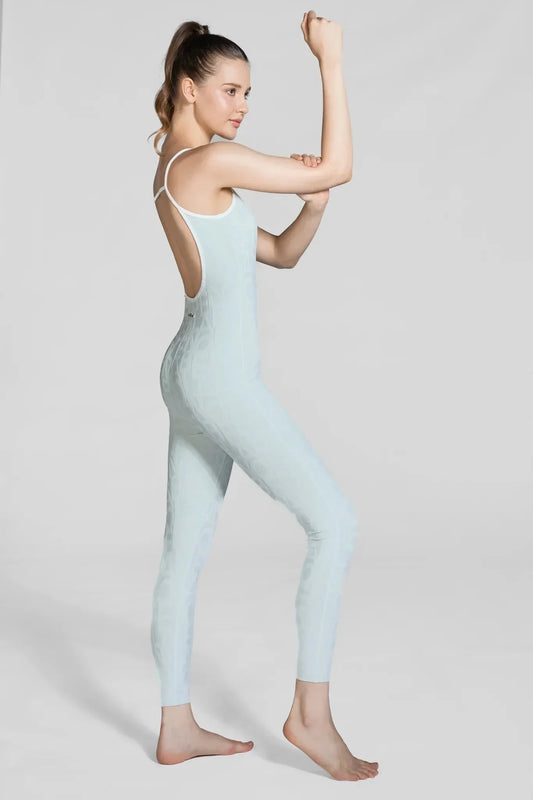Pilates is not just another workout routine—it’s a training method that focuses on core strength, balance, and flexibility. Through controlled and fluid movements, Pilates helps improve posture, strengthen deep muscles, enhance flexibility, and bring a sense of calm and relaxation.
If you’re new to Pilates, let Olaben guide you through the essentials to discover why this practice is loved by so many around the world.
Things Beginners Should Know About Pilates
Pilates is an effective, low-impact yet deeply engaging method of exercise developed nearly 100 years ago and now practiced worldwide. Pilates exercises activate core muscles, improve flexibility, balance, circulation, and overall body control. It’s suitable for all fitness levels, especially beginners or those returning to exercise after an injury.

1. Is Pilates easy for beginners?
Yes. Pilates is designed with a progression from basic to advanced, making it beginner-friendly. With slow, controlled movements, it is accessible to almost everyone. Even experienced practitioners often return to foundational exercises to refine their technique.
2. What age can practice Pilates?
Pilates has no age limit. Children as young as 8 can begin, while older adults use Pilates to maintain mobility, improve mental well-being, and stay flexible. What matters most is not age but readiness and consistency.
3. Pilates is a long-term journey
It’s not a workout you do for a few sessions and stop. Pilates is a continuous practice that brings transformation from within. When it becomes part of your daily lifestyle, it feels natural and enjoyable—especially with companions to share the journey.
4. Pilates works the whole body
Pilates isn’t about training one specific muscle group. It emphasizes balance and coordination across the entire body. Often one part of the body is held still while another moves, engaging the whole body. There are also specialized programs for pregnant women, seniors, or those with back and joint issues.
5. Quality over quantity
The core principle of Pilates is precision and control. For beginners, proper technique is more important than repetitions. Starting correctly helps avoid bad habits and ensures better results in less time.
6. Focus on breathing
Breathing is the foundation of Pilates. The three-dimensional breath through the rib cage and diaphragm activates core muscles such as the abs, back, hips, glutes, and pelvic floor. The goal is not rigidity but flexibility and fluidity through steady breathing.
7. Have a clear training plan
A structured workout plan helps you track progress and maintain motivation. When Pilates becomes a habit, you’ll notice significant positive changes in health, posture, and mindset.
8. How many sessions per week are enough?
There’s no fixed number, but many experts recommend starting with 2–3 sessions per week. As your body adapts, you can increase to 3–5 sessions per week, or even daily practice. The key is to listen to your body and adjust according to your personal goals.
9. Difference between Pilates and Yoga
Both Pilates and Yoga train the mind–body–spirit connection, but Pilates emphasizes dynamic movements and building core strength (abs, back, hips, glutes), while Yoga integrates mindfulness and spirituality. Yoga brings stillness, while Pilates develops a strong physical foundation.
10. Where should beginners practice Pilates?
Newcomers should start at reputable studios under professional guidance to avoid incorrect techniques and maximize results. Once you have a foundation, you can practice at home using guided videos or workout programs.
11. Pilates equipment
Besides a mat, you can incorporate balls, rings, resistance bands, or specialized machines to add variety and intensity. Depending on your conditions, you can set up at home or use equipment available at studios.
10 Pilates Exercises at Home for Beginners
If you want to improve strength, flexibility, and posture at home, Pilates is the perfect choice. Here are 10 basic yet highly effective exercises for beginners.
Exercise 1: The 100
- Lie on your back, arms and legs extended.
- Lift both legs parallel to the floor.
- Raise shoulders and neck, pump arms up and down while breathing steadily.
- Perform 10 sets with short breaks in between.

Exercise 2: Rolling Like a Ball
- Sit with knees bent, feet together, holding the back of your thighs.
- Roll back until your spine touches the mat, then return to the start.
- Repeat 5 times to feel the spine’s flexibility.

Exercise 3: Single-Leg Circles
- Lie on your back, arms and legs extended.
- Lift your left leg and draw circles from the hip, keeping the knee straight.
- Switch to the right leg.
- Do 10 circles per side.

Exercise 4: Single-Leg Teaser
- Lie on your back with knees bent and feet on the floor.
- Raise one leg at a 45° angle while lifting your upper body, arms parallel.
- Hold for 3 seconds, then return.
- Repeat 5 times per side.

Exercise 5: Criss-Cross
- Lie on your back, hands behind your head, legs raised and bent.
- Alternate leg extensions while twisting torso left and right.
- Continue for 3 minutes.

Exercise 6: Saw
- Sit upright, legs wide apart, arms extended sideways.
- Twist left, reaching hand toward the foot.
- Inhale as you fold, exhale as you return. Repeat 8 times per side.

Exercise 7: Mermaid
- Sit with legs folded to one side, same-side hand touching the heel.
- Stretch the other arm overhead and lean sideways.
- Hold for 3 seconds, repeat 10 times per side.

Exercise 8: Swimming
- Lie face down, arms and legs extended.
- Lift arms and legs off the floor, face down.
- Flutter arms and legs like swimming.
- Breathe steadily, continue for 1 minute.

Exercise 9: Bird Dog
- Start on all fours.
- Extend right arm and left leg, hold for a few seconds.
- Switch to left arm and right leg.
- 10 reps per side.

Exercise 10: Scissors
- Lie on your back, legs lifted upward.
- Lower one leg while holding the other with your hands.
- Alternate legs in a scissor-like motion.
- Perform 15–20 reps.

With these 10 Pilates exercises, you can begin your journey to improve your body shape, strengthen muscles, and relax your mind—all at home.
Train Better with Olaben
Pilates requires not only focus on movement but also proper clothing and accessories for maximum support. With Olaben, you’ll find stretch-fit leggings, supportive sports bras, breathable crop tops, and lightweight tank tops—all designed to accompany you in every Pilates session.
Olaben also offers non-slip yoga mats, convenient water bottles, and various accessories to keep you energized and comfortable. Whether you’re a beginner or experienced, Olaben has everything to enhance your Pilates experience.
Visit Olaben Store for In-Person Experience
You can try the latest designs and receive personalized advice from our team at Olaben showrooms:
Ho Chi Minh City
- Flagship Store: 1M, Street 10, Thao Dien, District 2 (Thu Duc) – Hotline: 092.828.2088
- Nguyen Trai: 35 Nguyen Trai, Ben Thanh, District 1 – Hotline: 036.428.2088
Hanoi
- Vincom Times City: 458 Minh Khai, Vinh Tuy, Hai Ba Trung – Hotline: 037.928.2088
- 263 Pho Hue, Hai Ba Trung
